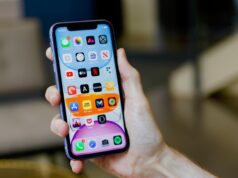With the upcoming release of iOS 15 for Apple mobile devices, Apple’s built-in search feature, Spotlight, will become much more functional. In what may be one of its more extensive updates since it introduced Siri Suggestions, the new version of Spotlight is becoming an alternative to Google for several vital queries, including web images and information about actors, musicians, TV shows, and movies.
Spotlight is also more accessible than ever before. It will also now be able to search across your photo library, deliver richer results for contacts, and connect you more directly with apps and the information they contain. It even allows you to install apps from the App Store without leaving Spotlight.
Years ago, Spotlight moved from its location to the left of the Home screen to become available with a swipe down in the middle of any iOS 7, which helped grow user adoption. Now, it’s available with the same swipe-down gesture on the iPhone’s Lock Screen, too.
Apple showed off a few of Spotlight’s improvements during its keynote address at its Worldwide Developer Conference, including the search feature’s new cards for looking up information on actors, movies, and shows, as well as musicians. This change alone could redirect many web searches away from Google or dedicated apps like IMDb.
Google has been offering quick access to common searches through its Knowledge Graph for years. This knowledge base allows it to gather information from sources and then use it to add informational panels above and the side of its standard search results. Panels on actors, musicians, shows, and movies are available as part of that effort.
But now, iPhone users can pull up this info on their home screen. The new cards include more than the typical Wikipedia bio and background information you may expect — they also showcase links to where you can listen to or watch content from the artist, actor, movie, or show in question.
They include news articles, social media links, and official websites and even direct you to where the searched person or topic may be found inside your apps. (E.g., a search for “Billie Eilish” may require you to see her tour tickets inside SeatGeek or a podcast where she’s a guest).
For web image searches, Spotlight also allows you to search for people, places, animals, and more from the web — eating into another search that Google today provides. Your investigations have been upgraded with richer results in iOS 15.
When you search for a contact, you’ll be taken to a card that does more than show their name and how to reach them. You’ll also see their current status (thanks to another iOS 15 feature), their location from FindMy, your recent conversations on Messages, your shared photos, calendar appointments, emails, notes, and files. It’s almost like a personal CRM system.
Personal photo searches have also been improved. Spotlight now uses Siri intelligence to allow you to search your photos by the people, scenes, and elements in your photos and location. And it can leverage the new Live Text feature in iOS 15 to find the text in your photos to return relevant results. Apple said this could make it easier to pull up images where you’ve screenshot a recipe, a store receipt, or even a handwritten note.
Some features related to Spotlight’s integration with apps weren’t mentioned during the keynote. The Spotlight will now display action buttons on the Maps results for businesses to prompt users to engage with that business’s app. In this case, the feature is leveraging App Clips, which are small parts of a developer’s app that let you quickly perform a task without downloading or installing the app.
For example, from Spotlight, you may be prompted to pull up a restaurant’s menu, buy tickets, make an appointment, order takeout, join a waitlist, see showtimes, pay for parking, check prices, and more. The feature will require the business to support App Clips to work.
Another under-the-radar change — but a significant one — is the new ability to install apps from the App Store directly from Spotlight. This could prompt more app installs, as it reduces the steps from a search to a download and makes querying the App Store more broadly available across the operating system.
Developers can also insert a few lines of code into their app to make data from the app discoverable within Spotlight and customize how it’s presented to users. This means Spotlight can work as a tool for searching content from inside apps — another way Apple redirects users away from traditional web searches in favor of apps.
However, unlike Google’s search engine, which relies on crawlers that browse the web to index the data it contains, Spotlight’s in-app search requires developer adoption. Still, Apple sees Spotlight as a potential rival to web search engines, including Google.
“Spotlight is the universal place to start all your searches,” Apple SVP of Software Engineering Craig Federighi said during the keynote event. Spotlight can’t handle “all” your searches just yet, but it appears to be steadily working towards that goal.








